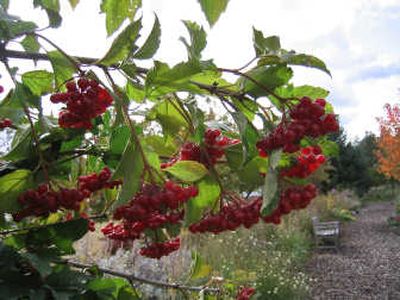American cranberry bush (viburnum trilobum)

If you are looking for a hardy shrub that has beautiful flowers in the spring, attractive berries that last for months and colorful foliage in the fall, you can’t do better than this.
American Cranberry Bush (Viburnum trilobum) makes a delightful addition to any landscape. This deciduous shrub is native to both the Northeastern and Northwestern United States. It has maple-like leaves and a moderate growth rate, topping out at a maximum height of 12 feet. In the spring, the shrub puts out a wealth of white lacecap flowers that are four inches in diameter and reminiscent of the blossoms of Hydrangreas and Doublefile Viburnums.
During the summer, the flowers are replaced with bountiful clusters of shiny, red berries. They last well into the winter, much to the delight of overwintering birds. Although I have never eaten the berries myself, I understand the fruit makes a good jelly.
The red berries contrast nicely with the deep green leaves during the summer. In early fall, those leaves change into shades of red and purple, transforming the shrub into a stunning focal point in the landscape.
This shrub will grow in sun or shade and requires some pruning to keep it from getting leggy. It will tolerate both acid and alkaline soils. The cultivars ‘Alfredo,’ ‘Bailey Compact,’ and ‘Compactum’ grow to a more modest height of six feet.
Although American Cranberry Bush can tolerate drought conditions once it has become established, it prefers a moist, well-drained soil.